Behold the Sansui AU-X11, the other Sansui AU-X1. The AU-X11 is a Japan-only integrated amp. This one was damaged during shipping. Let’s take a look.
That’s right, the Sansui AU-X11 integrated amplifier is the AU-X1 nobody knows about. That’s because it was only sold in Japan, as far as I can tell and true to that understanding, this one is a Japanese market 100V-only version. My customer purchased the unit you see here, against my advice, but that’s OK, not everyone takes my advice, nor should they!
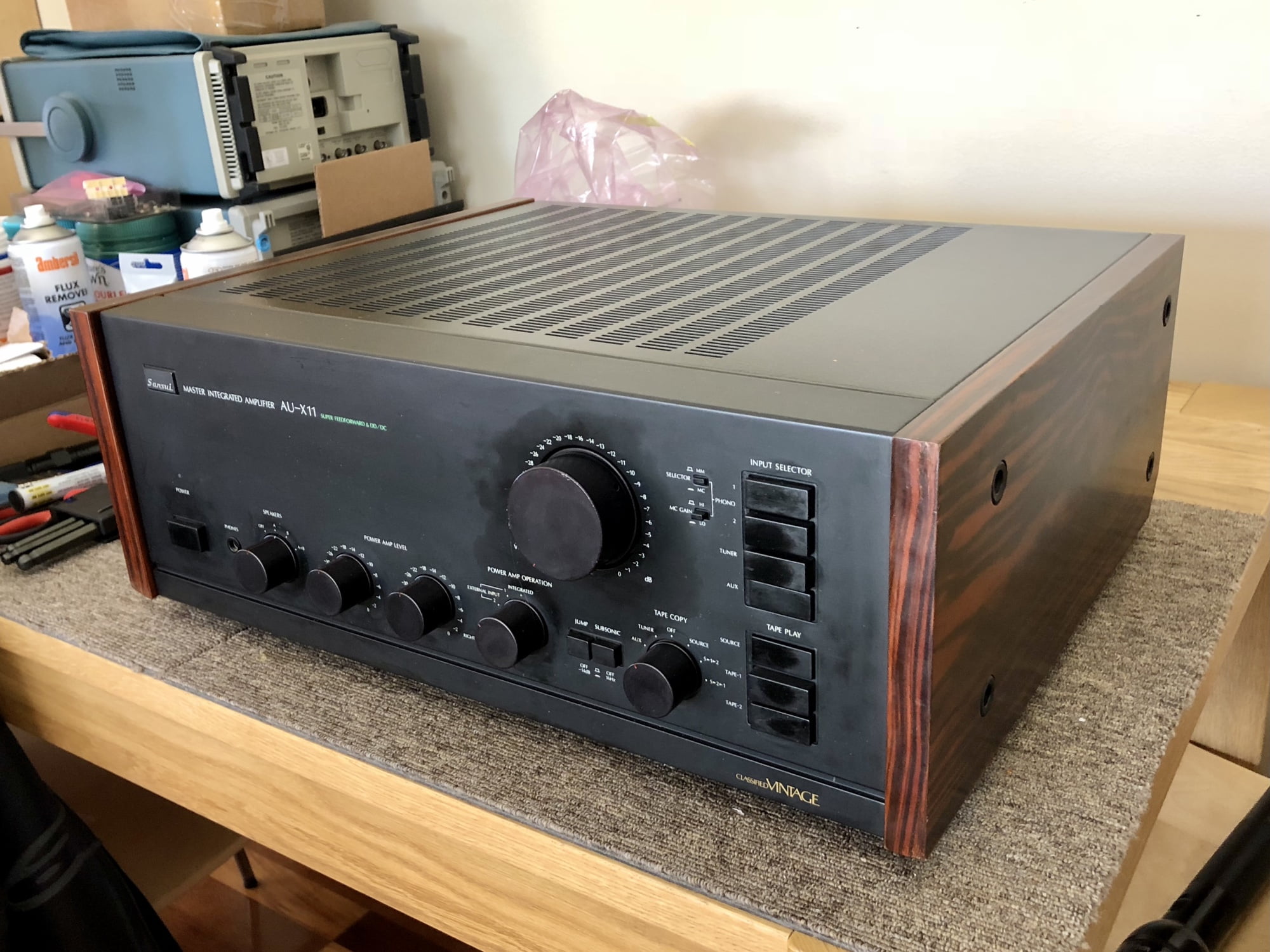
I worked on this amplifier in late 2018 and it’s taken me a while to write about it, sorry about that! I uploaded a video at the time and have just made it public, so take a look:
Sansui AU-X11 Specifications
Courtesy of HiFi Engine
It’s worth pointing out here that the AU-X11 specs are very similar to those of the AU-X1. Similar power output, weight etc. It’s also worth pointing out that I recently overhauled an AU-X1 and I can confirm that they are the same.
Power output: 160 watts per channel into 8Ω (stereo)
Frequency response: 1Hz to 300kHz
Total harmonic distortion: 0.004%
Damping factor: 100
Input sensitivity: 0.27mV (MC), 2.5mV (MM), 200mV (line)
Signal-to-noise ratio: 77dB (MC), 91dB (MM), 110dB (line)
Output: 200mV (line), 1V (Pre out)
Load impedance: 4Ω to 16Ω
Dimensions: 515 x 197 x 450mm
Weight: 28kg – jeepers!
Year: 1981
Features
Sansui incorporated a bunch of marketing-driven buzz terms and features into the AU-X11 and other amplifiers in the series like the AU-919. These include ‘Straight DC Stereo Amplifier‘, DD/DC Power/Phono Amps‘, and others I forget…
DC indicates that the AU-X11 amplifies everything from DC – 0 Hz – through to 300 kHz in this case. This is achieved using very fast transistors, no capacitors in the signal path and servos. Direct Coupled circuits are more complex but technically better. Servo circuits keep DC offset voltages to a minimum.
DD stands for diamond differential, referring to the circuit topology that utilises transistors in a symmetrical configuration. Symmetrical, differential configurations are expensive because they use many parts. They also deliver excellent technical performance.
Like the AU-919, there is an advanced, low-noise FET-based phono preamp that can almost certainly not be repaired if it fails. Thankfully they generally don’t fail. Unlike the AU-919, there are no tone controls in this more purist amplifier or the AU-X1. The AU-X11 is also much more potent than the AU-919, on par with the AU-X1.
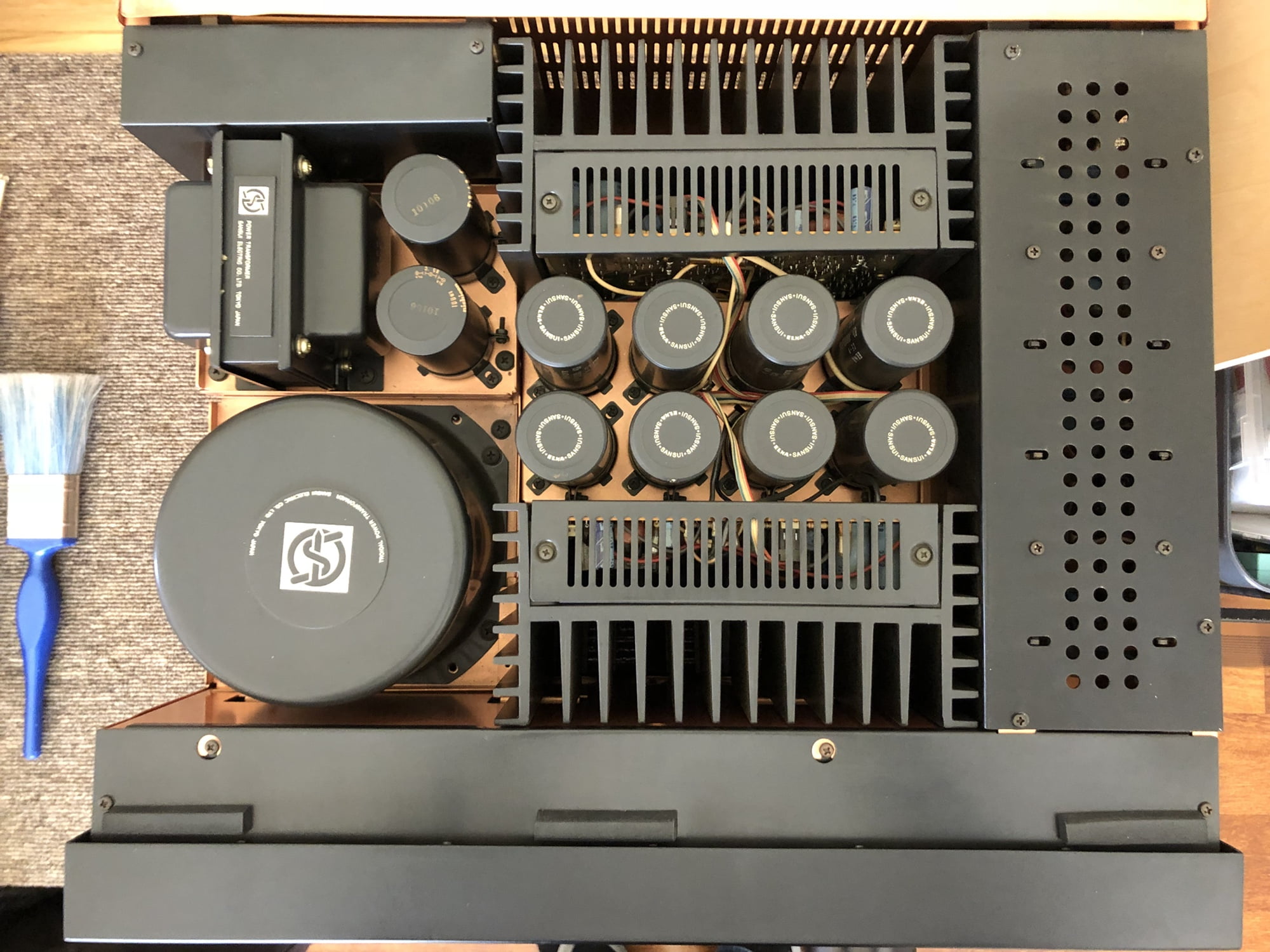
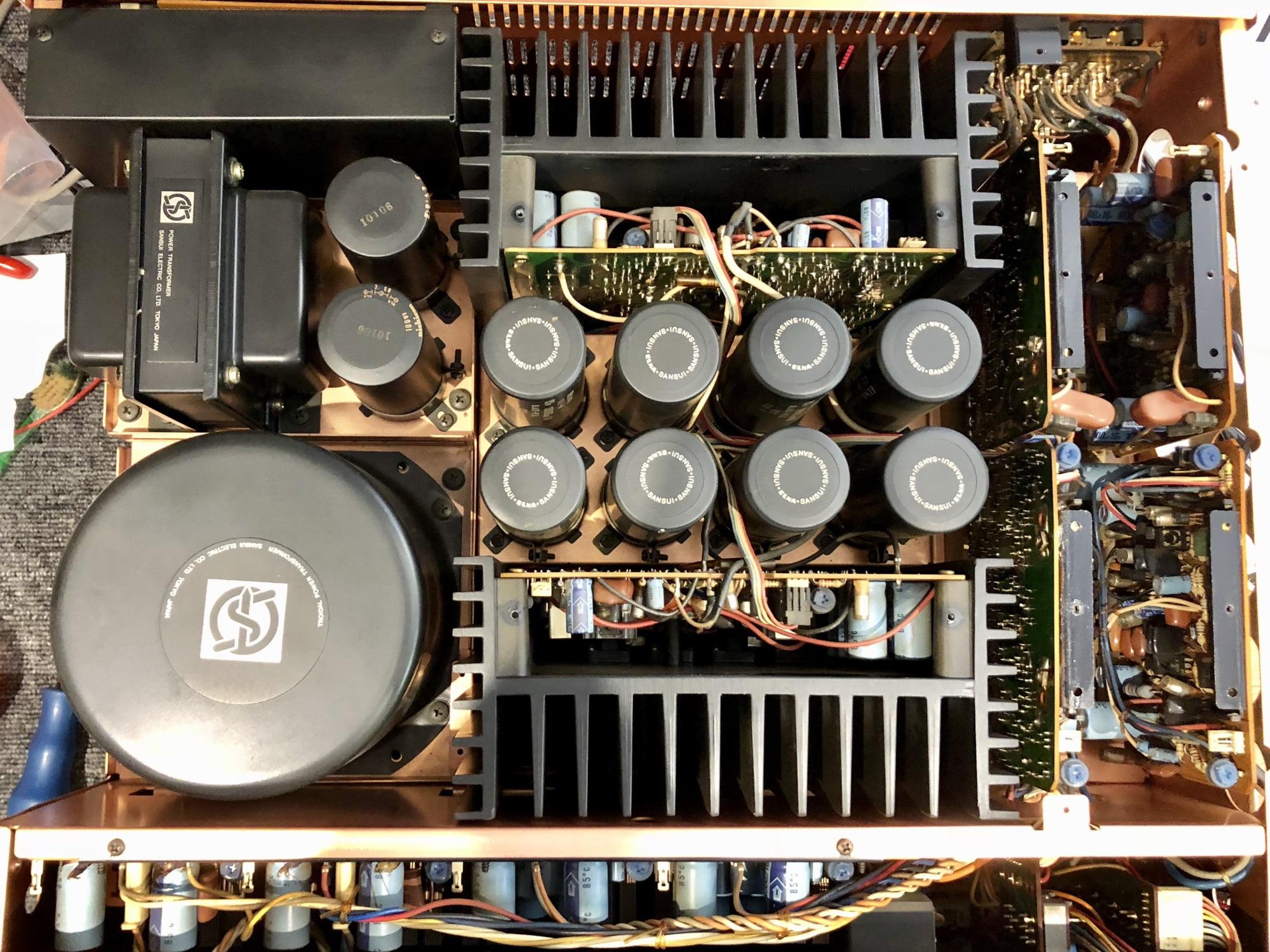
Problems
This particular AU-X11 came from Japan and was purchased after many hours of discussion with the soon-to-be owner. Right, so why was this purchase against my advice? I advised him against buying this amplifier for three main reasons:
- Reason 1: Shipping anything involves risk. The heavier, rarer and further away something is the bigger the risk. This isn’t a theory, I’ve assessed the damage, many times and sadly my worries were proven real when this unit was – you guessed it – damaged in shipping. Severely.
- Reason 2: A bigger potential issue with rare equipment like the AU-X11 is the complete absence of service data. The term ‘service data’ refers to factory schematics, engineering drawings, procedures and so on. This information is especially important with a complex piece of gear that doesn’t work properly. The lack of service data means that owners must rely on the skill and experience of technicians willing to assist. Thankfully, the AU-X11 is very similar to the AU-X1.
- Reason 3: This is a 100V-only model. That means you must use a step-down transformer, even where the local voltage is 120V. This is an additional cost and with amplifiers, performance is generally better where additional transformers are not involved.
Damage
This AU-X11 was very poorly packed for something so heavy and rare. With just bubble wrap and cardboard protecting it, even one drop would likely be catastrophic, sheer stupidity on the part of whoever packed it. The chassis damage was obvious as soon as I pulled the lid off. This unit was dropped, twice I reckon, on its left front and left rear. It may have toppled out of the back of a truck or just been dead-dropped. Either way, the sort of chassis damage it sustained cannot easily be repaired.
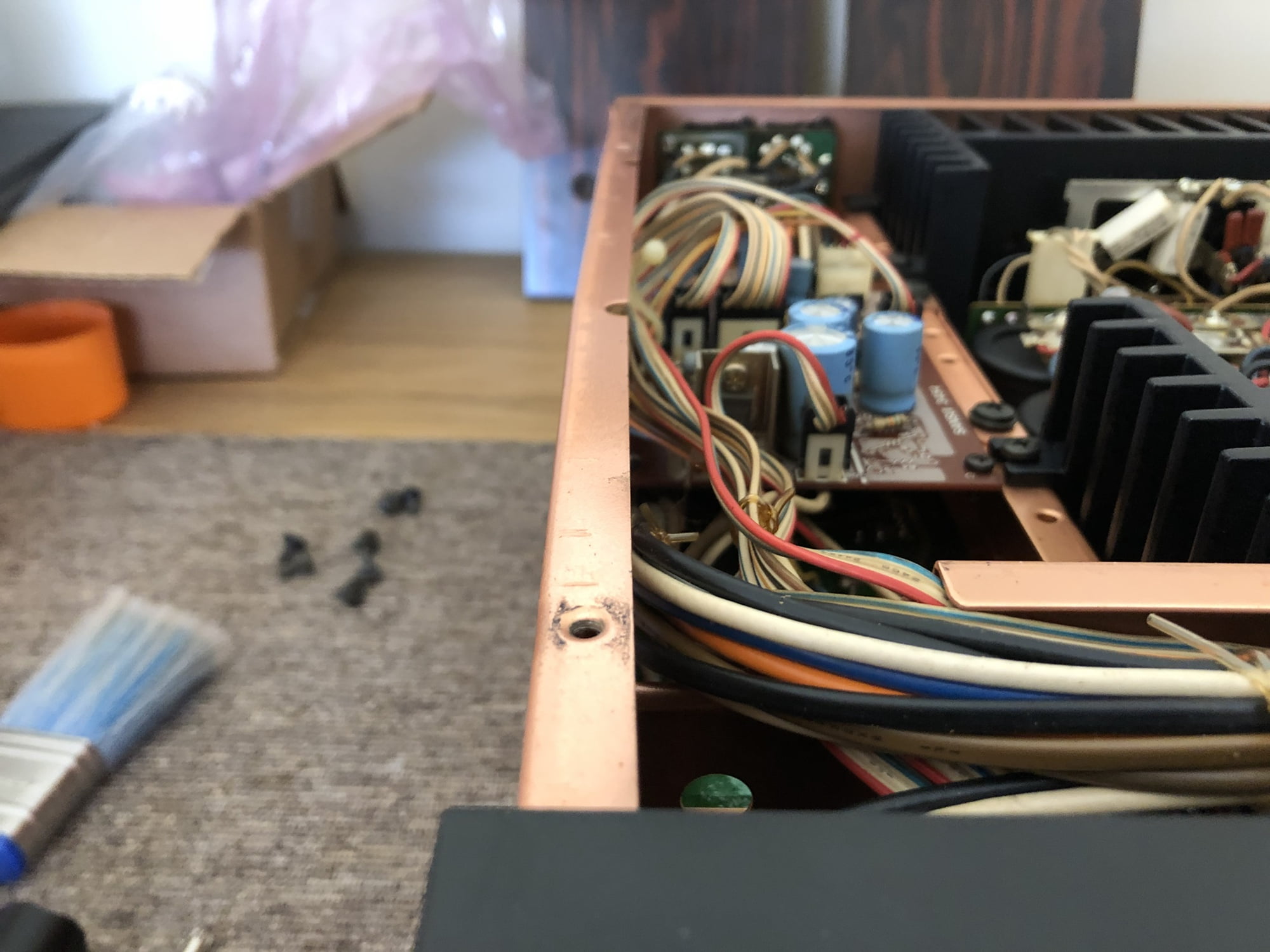
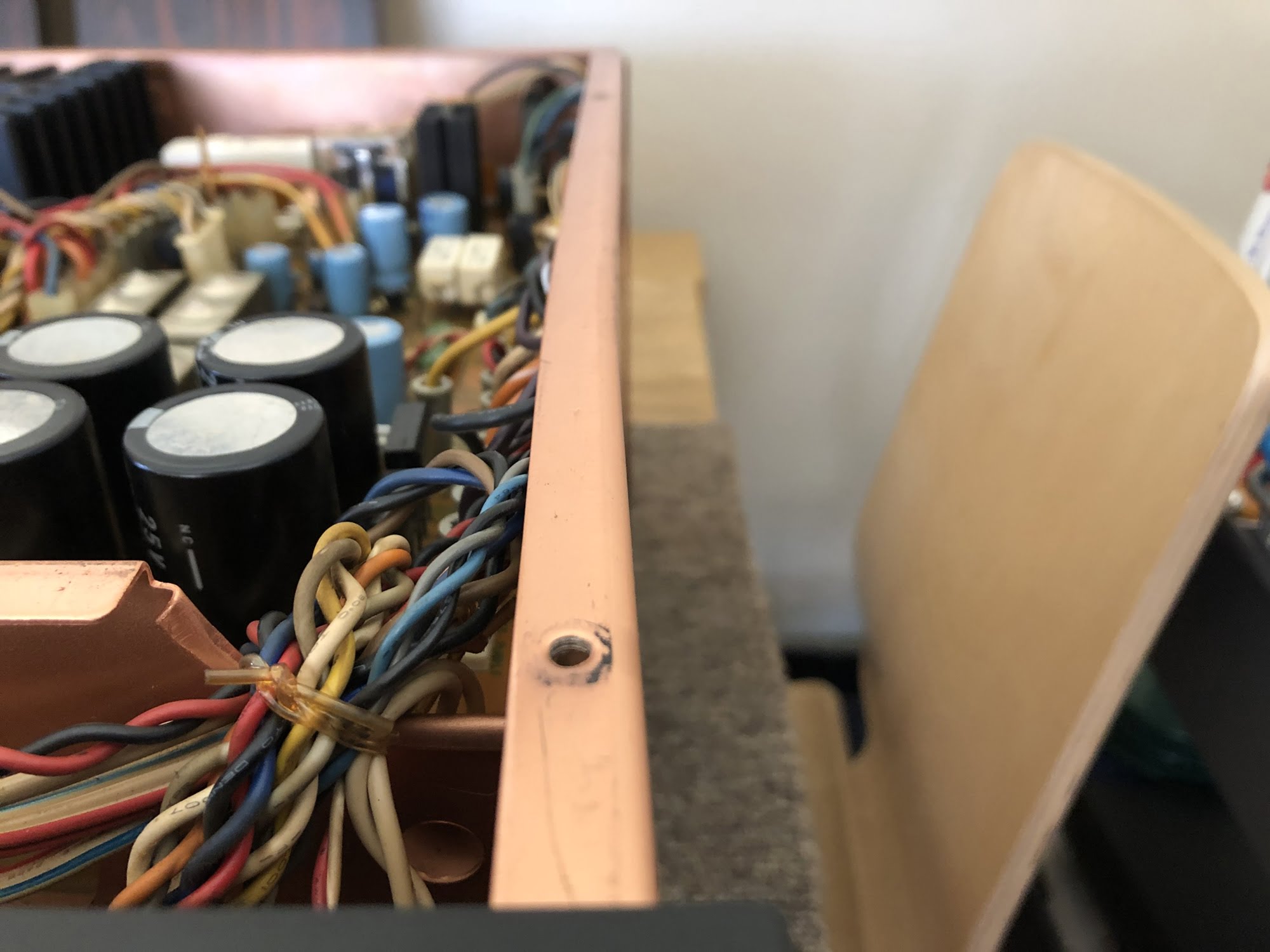
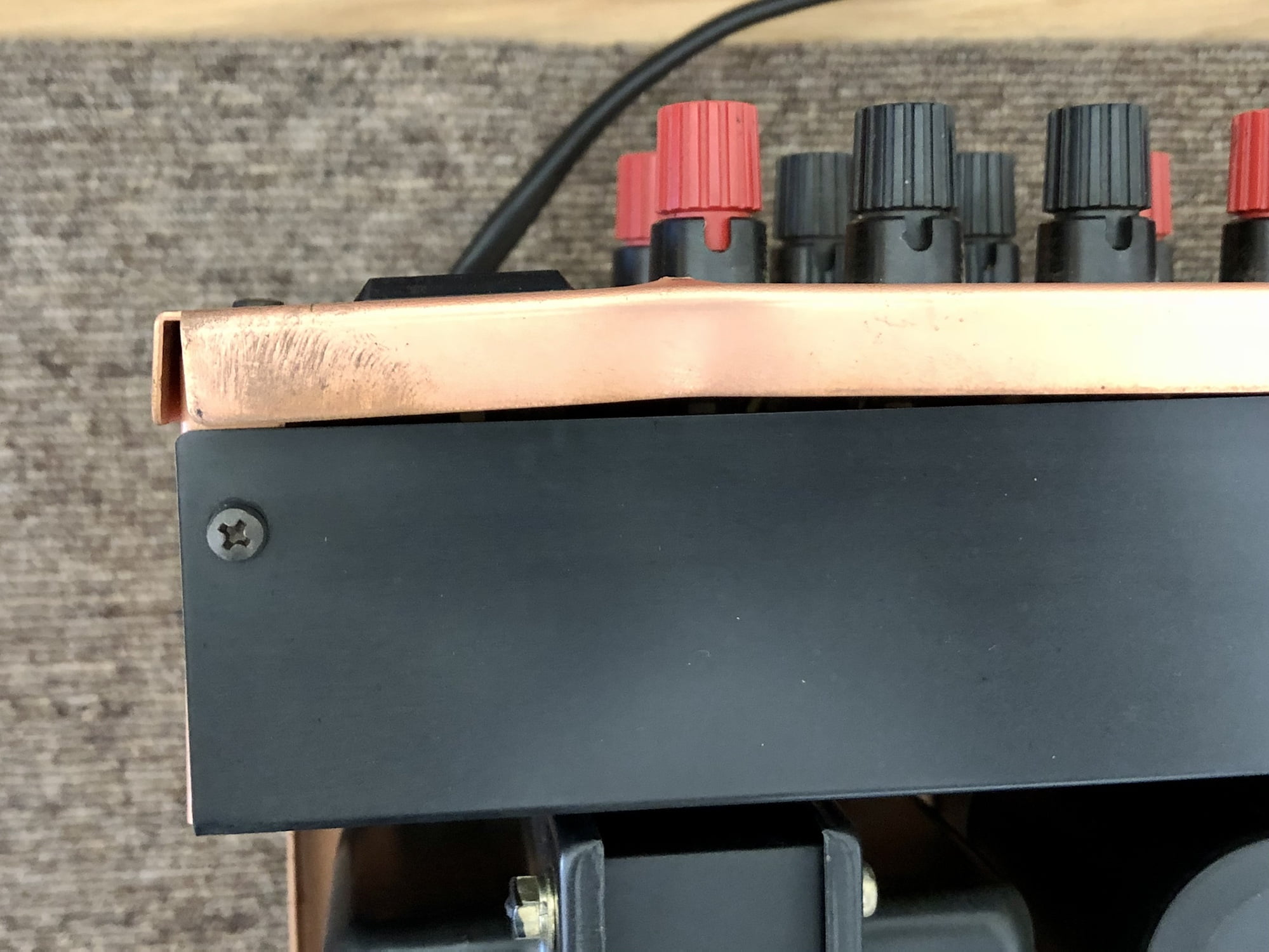
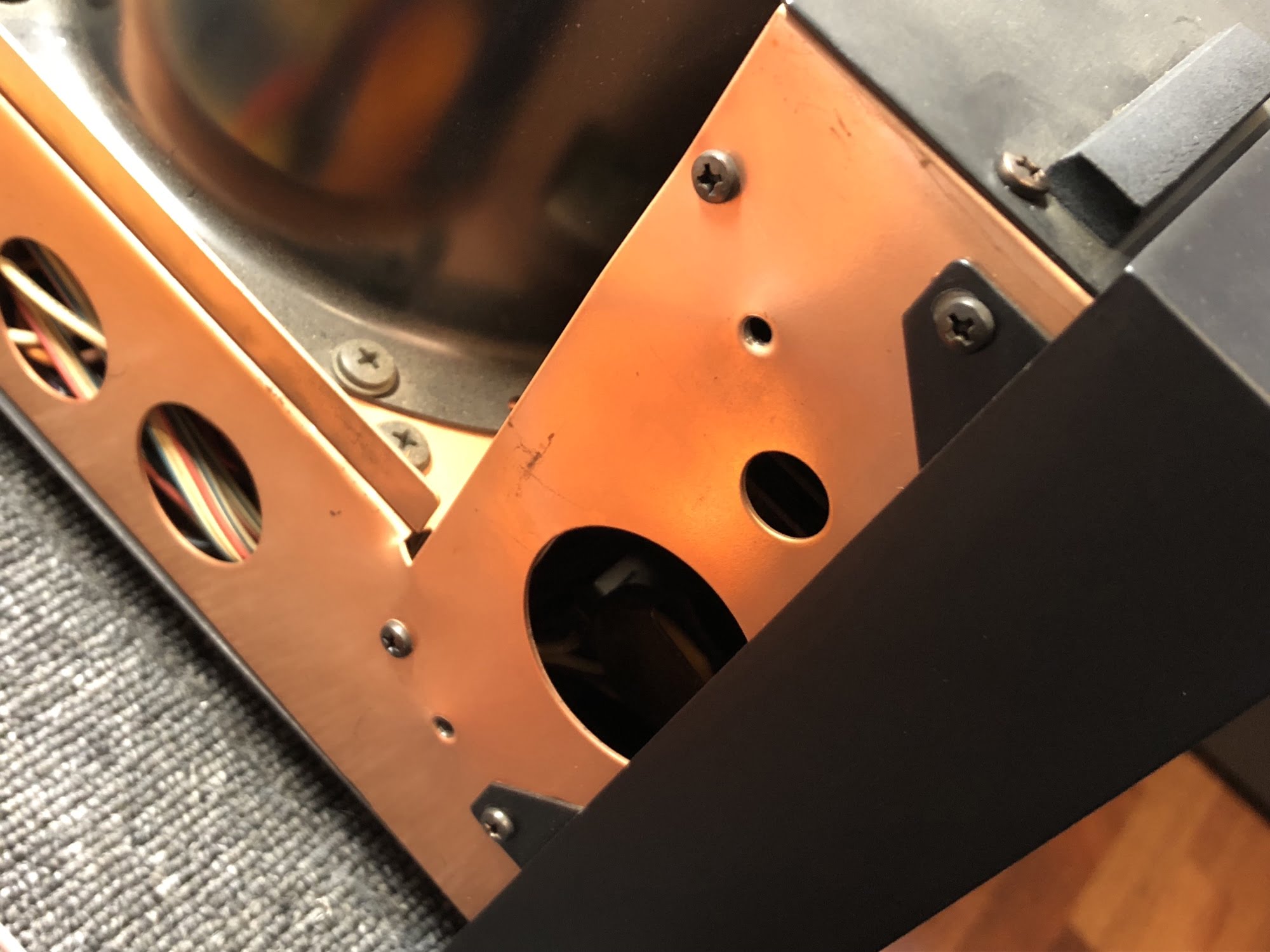
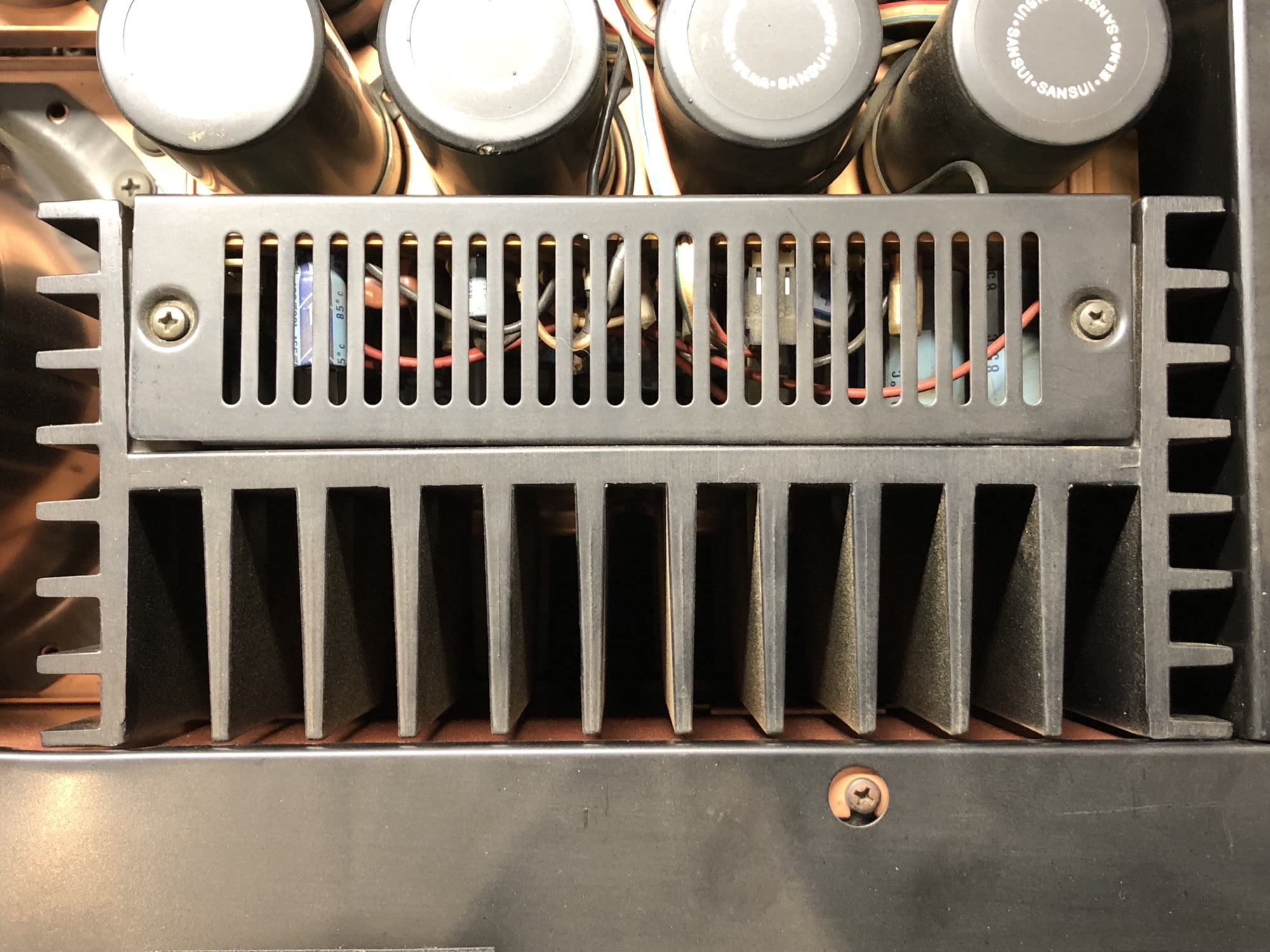
The drop event/s that caused this chassis damage also caused another, potentially solvable problem. I discovered a break in the signal path, despite all the circuits working nominally after service and adjustment. This meant that signals would not pass through the amp. Mechanical damage correlates strongly with these sorts of issues.
Service
Thankfully, I’ve worked on a lot of Sansui amplifiers so I was able to put together a service procedure for this AU-X11. Like the AU-919, this amplifier is complex and has many adjustment points, mostly for DC servos. From memory, there are at least 10 in the AU-X11. I spent around three hours with this amplifier on the bench, carefully measuring and adjusting everything.
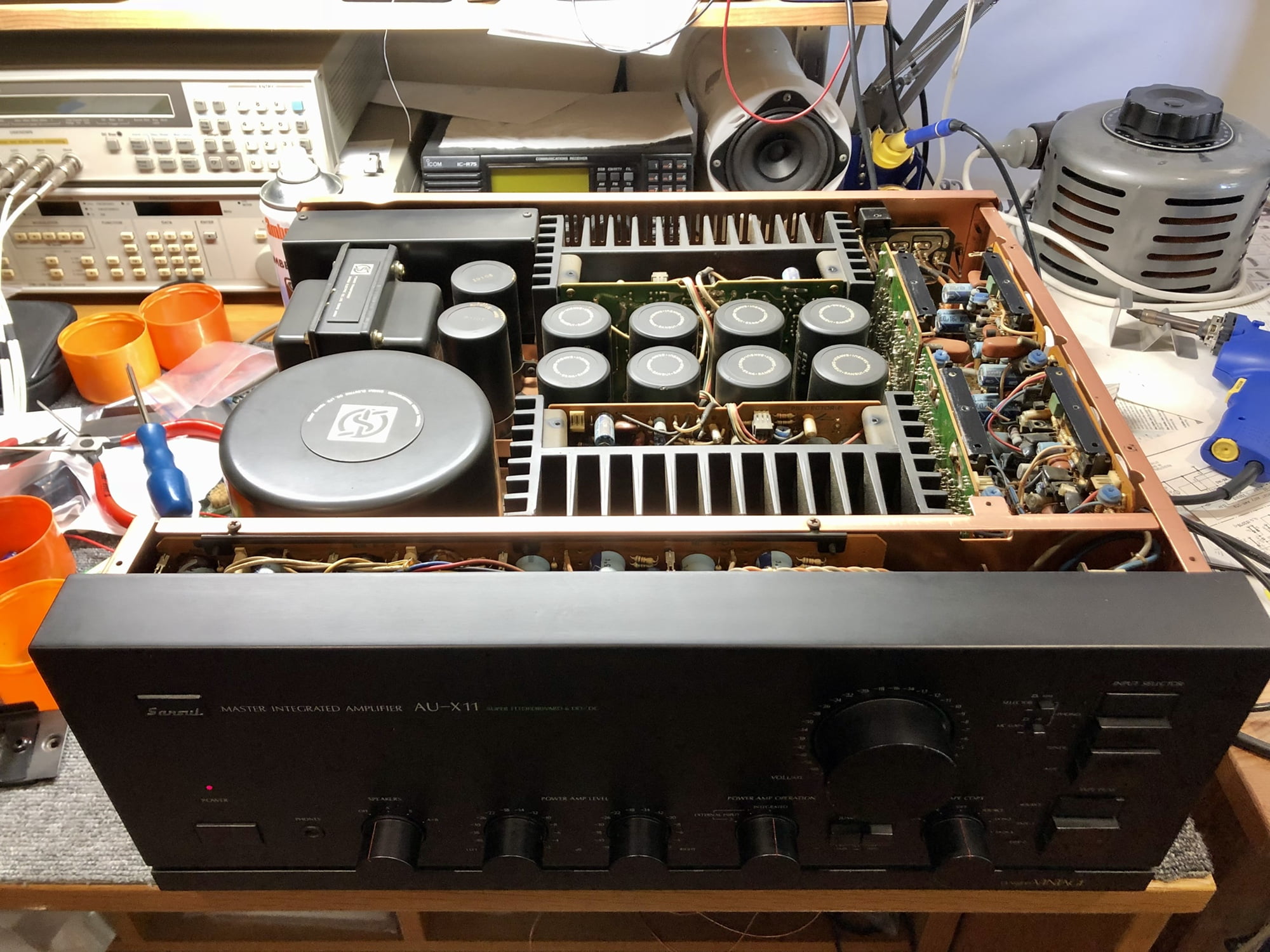
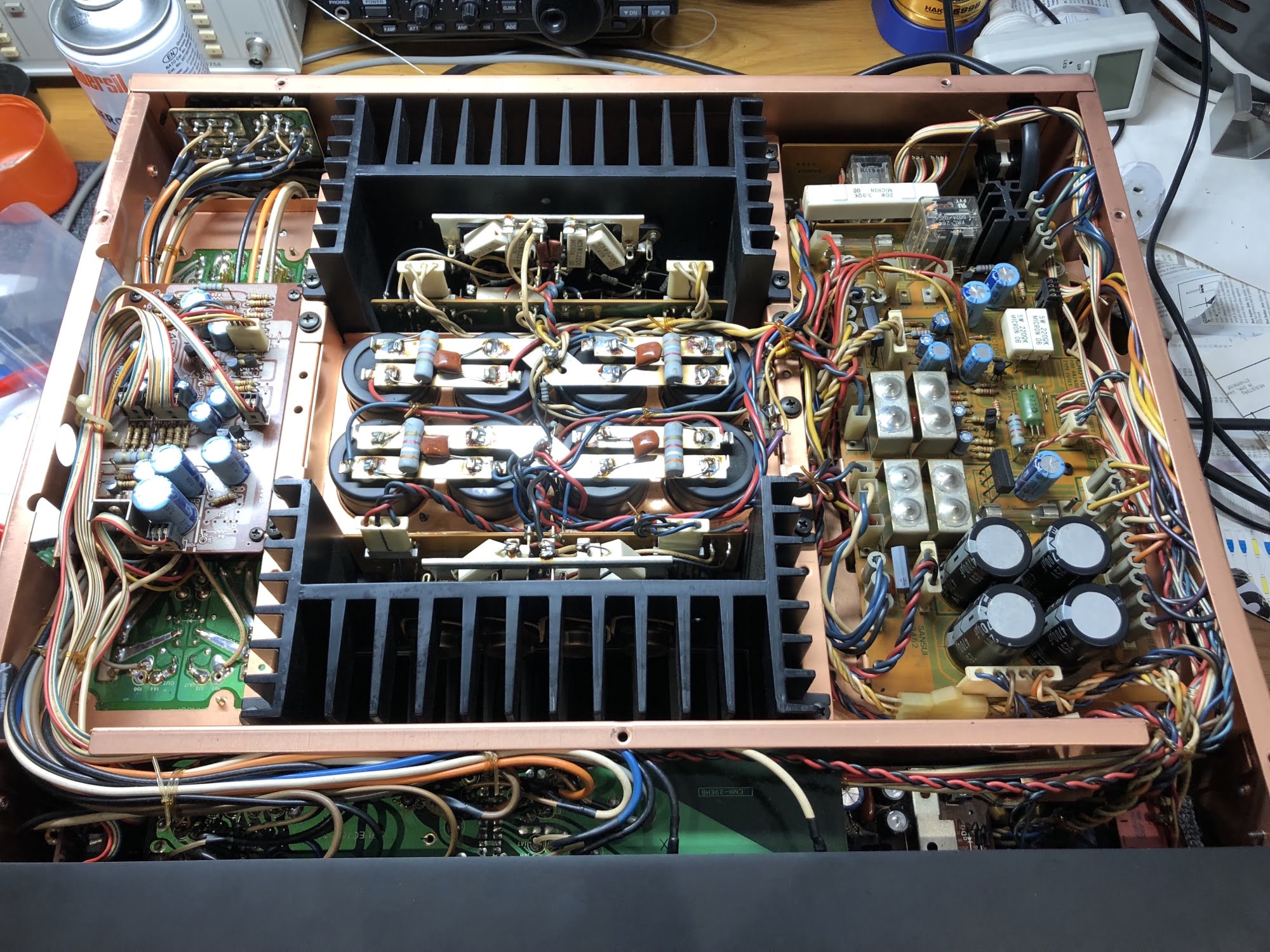
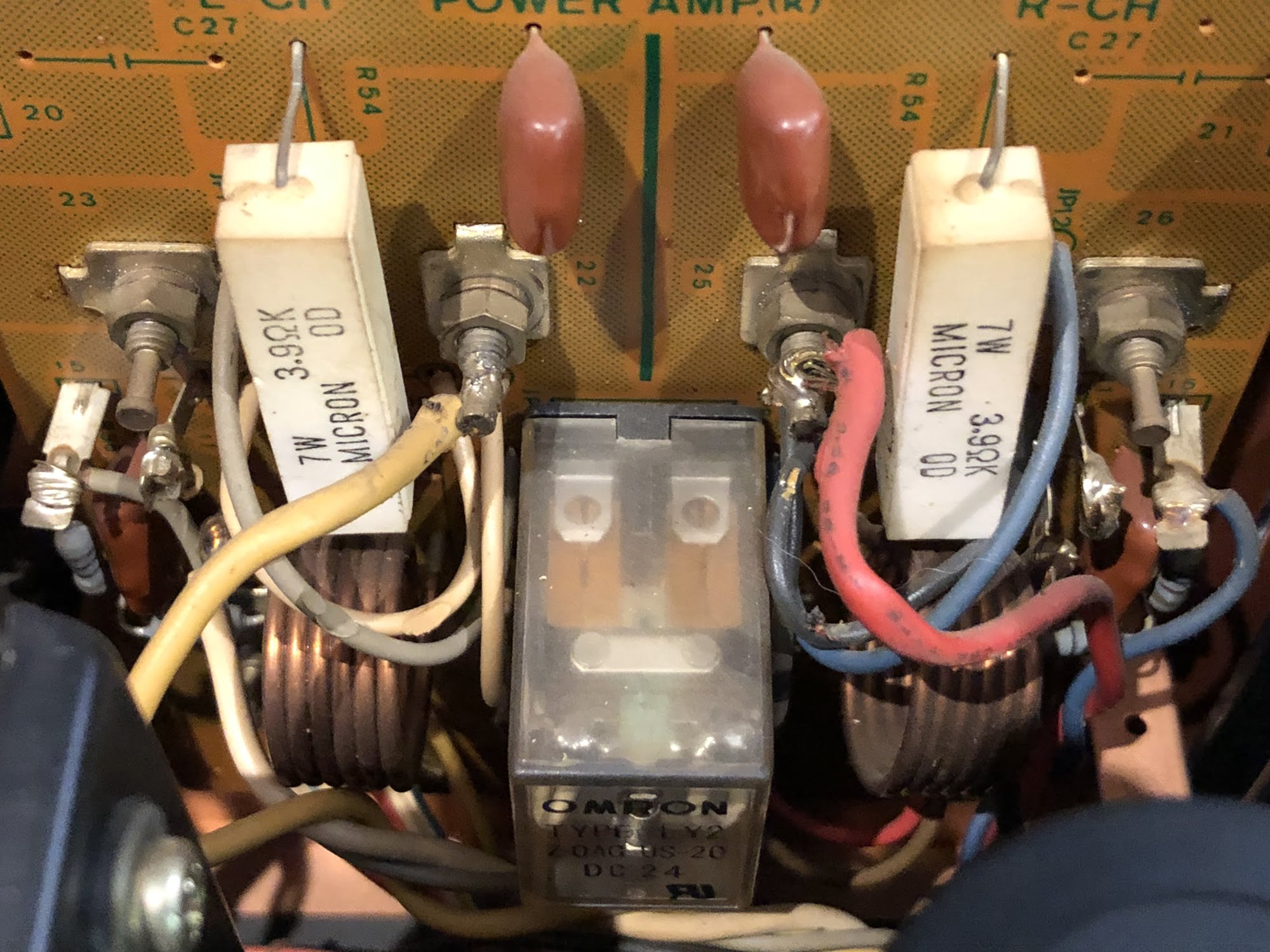
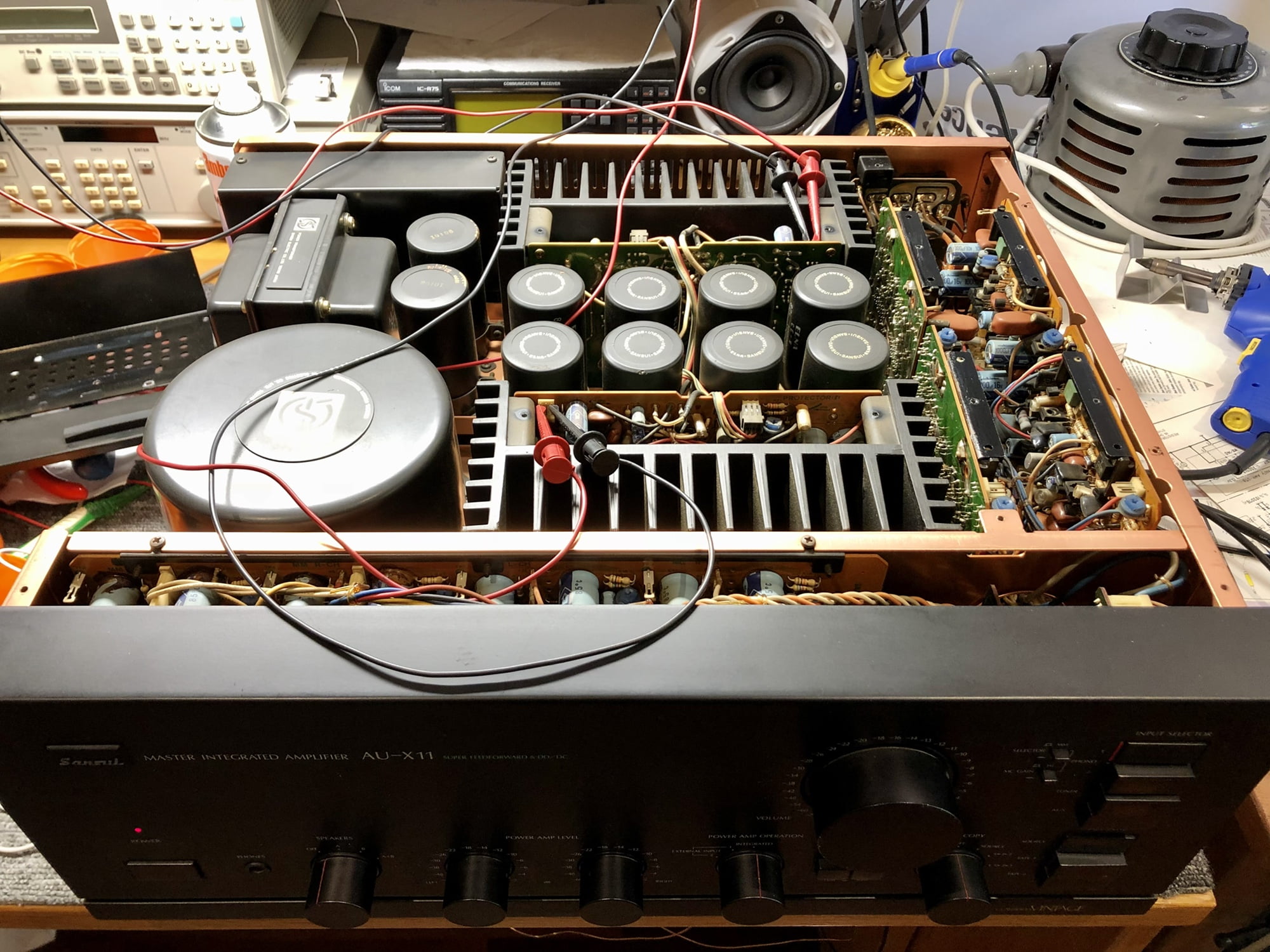
Future Repairs
The signal integrity problem with this AU-X11 is no doubt fixable. Ideally, this whole amp should be disassembled and carefully reassembled, repairing and replacing bits and pieces as needed. That’s a big job. My customer is a lovely fellow but he didn’t want to spend much more on this amplifier. That’s a shame, but this is what happens sometimes with pieces like this.
The owner also struggled with the idea of not knowing exactly what was wrong and therefore exactly how much this AU-X11 would cost to repair. There is no doubt that to do this job properly, many hours of additional work are needed. Last I heard, he was still pondering what to do with this lovely old beauty.

Such is the nature of rare, old equipment, there’s a bit to be learned from this story. If you own or play with old gear like this, you have to accept the risks involved with shipping. In this case, however, because this is an irreplaceable rare AU-X11, it’s fair to say that even repairs up to several thousand dollars are both viable and very worth doing. You’d pay AUD 10,000 for something like this now and I guarantee it wouldn’t be as good.
Should You Buy One?
Should you buy a Sansui AU-X11? Sure, if you can live with the 100V problem, but only from a reputable seller, impeccably packed and with full coverage against loss or damage. The Sansui AU-X1 I recently repaired and restored sounds sublime, and incredible for an integrated amplifier, and there is no reason to think this AU-X11 would be any different.
In terms of its comparisons, something like an Accuphase E-480 has similar power. It only has two power supply capacitors and therefore probably a higher power supply impedance, but being an Accuphase, it will sound superb. Yamaha’s AS-3200 is way less powerful, lighter and costs $10K. The new Luxman L-505uXII looks nice but is also lighter and less powerful.
In terms of its compatibility with local voltages, this is an issue. It’s never ideal to run any amplifier, let alone a monster like this from a step-down transformer and that’s certainly what you’ll have to do with one of these. You’ll need a large transformer too, something like the 1000W version of this Tortech transformer, in Australia, at a minimum.
Don’t forget that there are more accessible Sansui amplifiers like the AU-717 and AU-919 which will get you a sizable chunk of Sansui vintage goodness, for much less money and risk. Whatever you end up with, let me know if you’d like assistance with your Sansui amplifier!
Discover more from LiQUiD AUDiO
Subscribe to get the latest posts sent to your email.

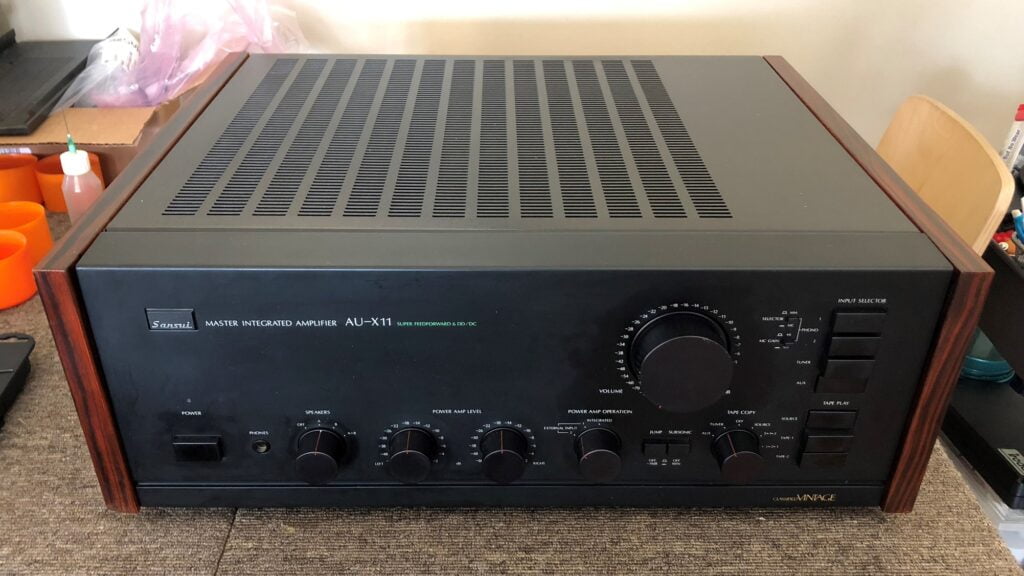

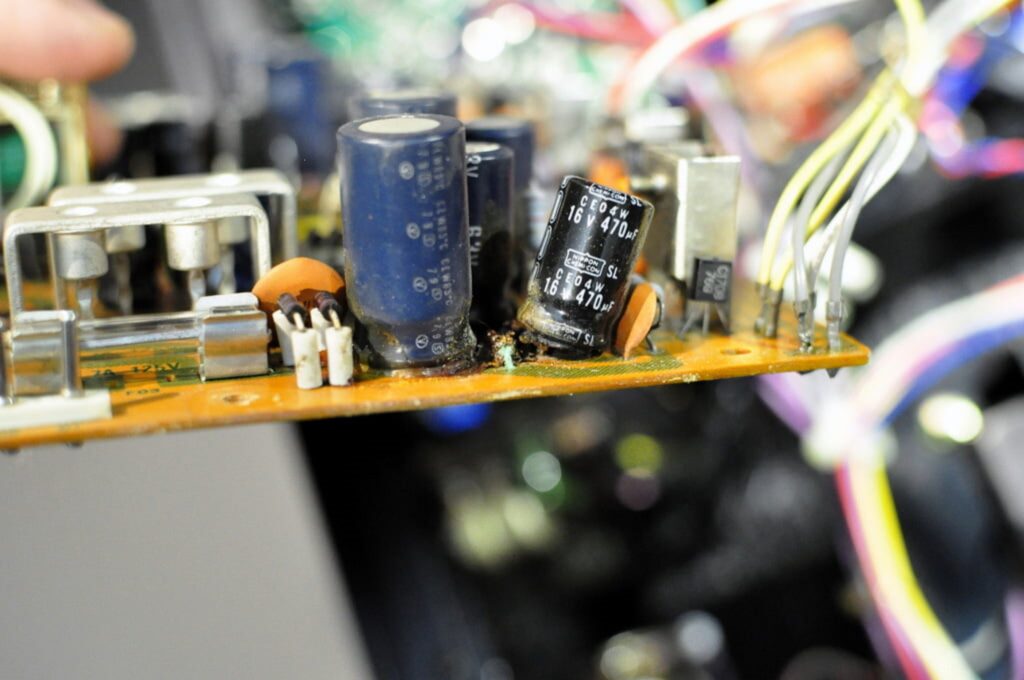
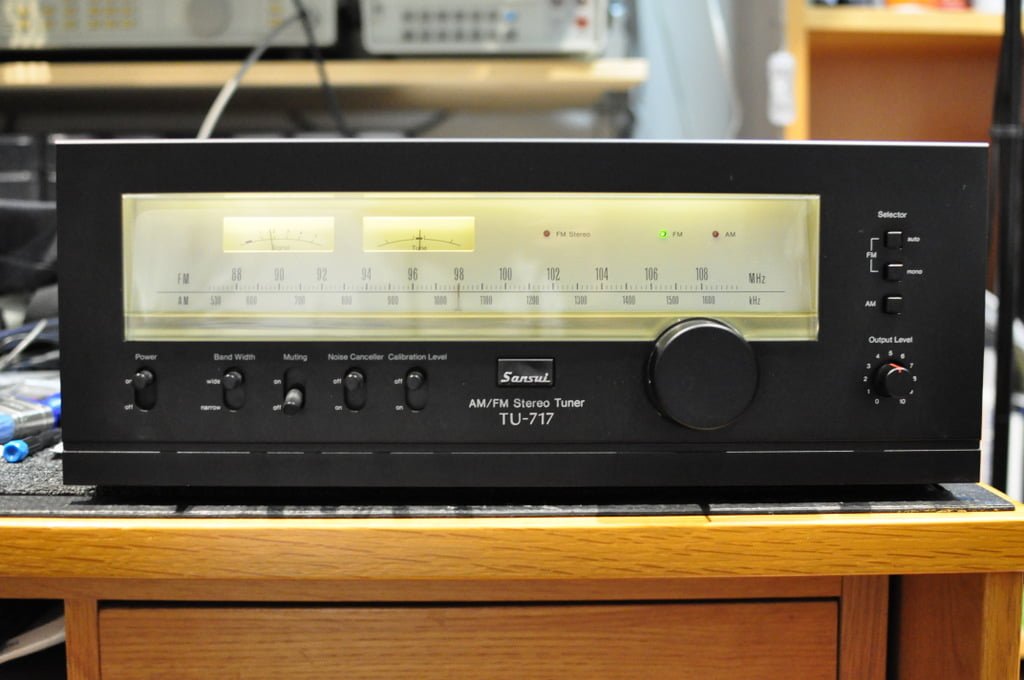

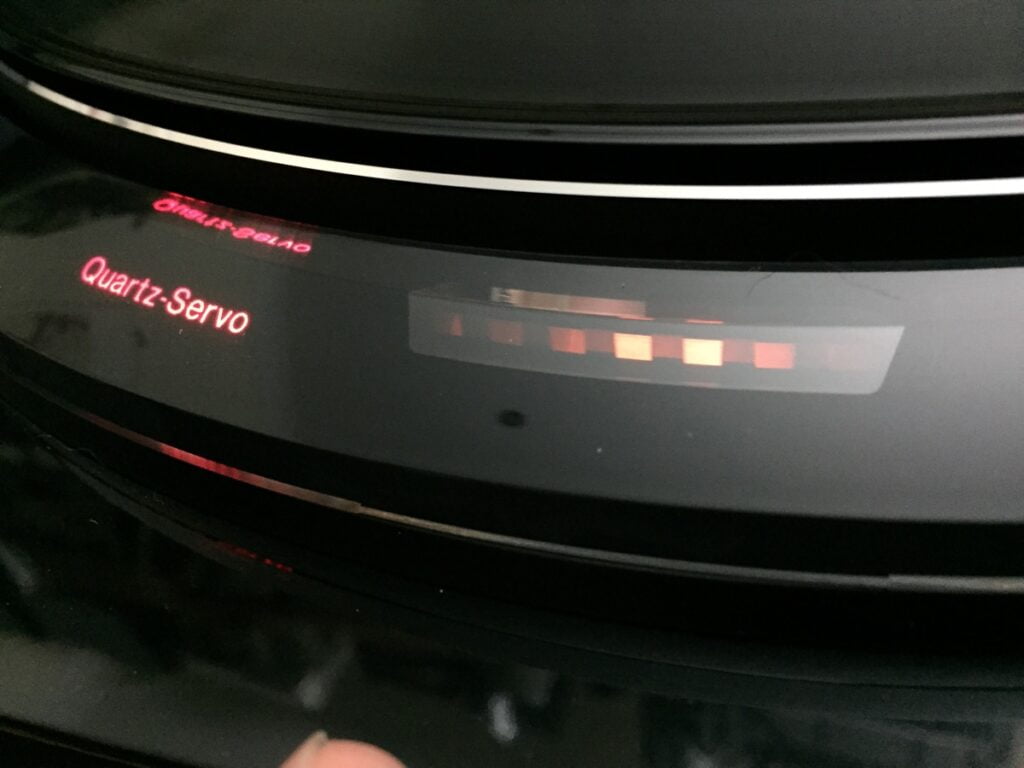
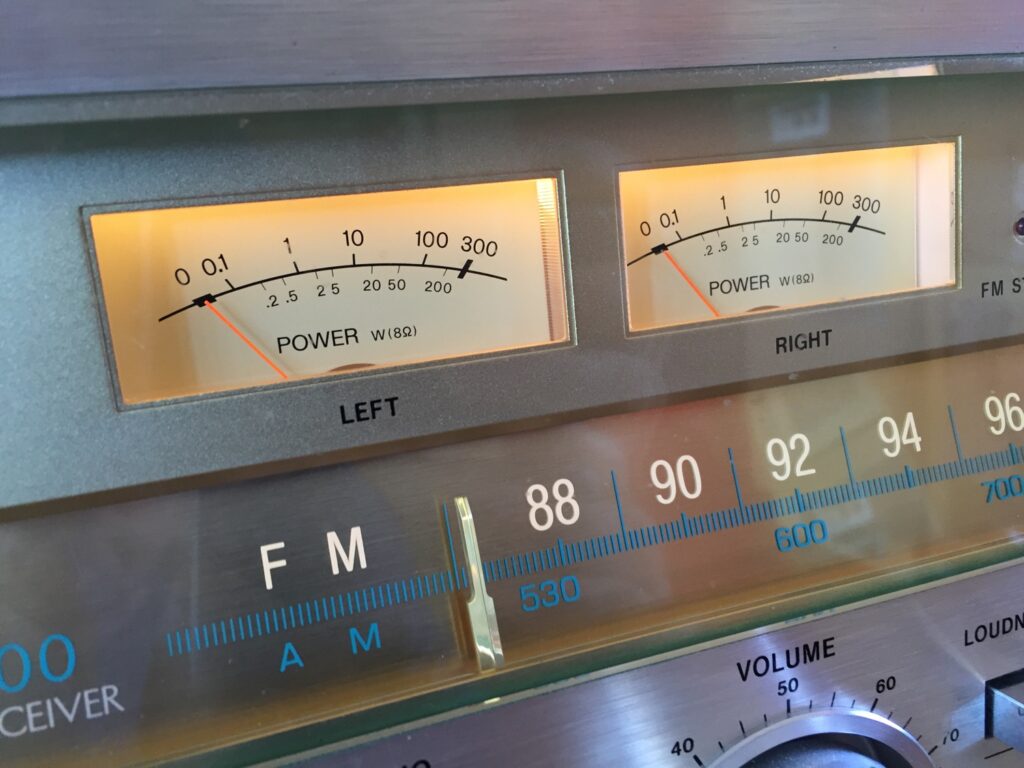
What do you think of the Sony Str V7 reciever ?
Nice receiver!
Nice write-up, came across your website and love it. I am in Brisbane and have a Sansui AUX-711 that I lugged from the Middle East paired to Infinity Ren 80’s. The amp has not been touched since I owned it for 20 years. It has a bit of crackle on the left channel and cuts out. I am dreading giving it for repair, probably needs capping and a good deoxit
Hi Merwyn, glad you enjoyed the article and yes, make sure you take this to someone who knows their stuff!
WOW so much thanks for this write-up & the additional Sansui info. I’ve got an AU-317 amp & love it & have missed opportunities with both AU-717’s & AU-919’s BBB numerous times. I read your article as I came across one of these amps for sale & appreciate all the info & insight in your article. Thanks again & btw, also looking at some vintage Sansui tube amps too. Thanks again…Dave
My pleasure David, glad you found the articles helpful!
BONJOUR JE CONNAIS UN POFESSIONEL QUI VEND UN AMPLI SANSUI AU X11 IL ME DIT QUE TOUT EST OK ET QUE TOUT EST DORRIGINE QUEN PENSER VOUS ,??
Hi Christian, thanks for your question, translated here for my English-speaking readers:
HELLO I KNOW A PROFESSIONAL WHO SELLS A SANSUI X11 AMP HE TELLS ME THAT EVERYTHING IS OK AND THAT EVERYTHING IS ORIGINAL WHAT DO YOU THINK,??
My answer: I would need to inspect the unit in question, it’s not possible to specifically comment on something as complex as this, sight-unseen. But, if you are prepared to take a chance and have access to a really good technician to go through the unit and do any work needed, go for it!